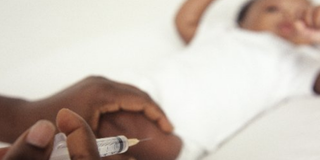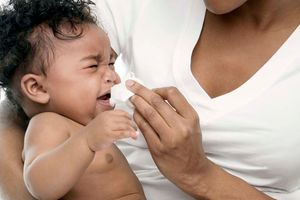List of KEPI vaccines from birth to 9 months

What you need to know:
- At birth: BCG (Bacillus Calmette–Guérin vaccine)
- Week 6 and 10: Rotavirus vaccine (Rotarix)
- Week 6, 10 and 14: Oral polio vaccine; DPT, Hepatitis B and HIB; Pneumococcal vaccine (PCV 10)
- 6 months: Measles vaccine, Vitamin A
- 9 months: Measles vaccine, Yellow Fever vaccine
After welcoming your newborn, there are certain immunisations that he or she will need within the first few months and years of life.
These immunisations are set under the Kenya Expanded Programme Immunisation (KEPI) Schedule.
They are meant to give your baby protection against illnesses and diseases such as tuberculosis, measles, mumps, typhoid, chicken pox, meningitis, rotavirus, tetanus, polio, among others.
The following are immunisations under the KEPI Schedule:
At birth
BCG (Bacillus Calmette–Guérin vaccine): This vaccine is given by injection and is primarily meant to build immunity against Tuberculosis (TB).
Additionally, according to the World Health Organisation, this vaccine has a documented protective effect against meningitis in children.
“BCG does not however prevent primary infection and, more importantly, does not prevent reactivation of latent pulmonary infection, the principal source of bacillary spread in the community,” says the WHO.
The BCG vaccine is administered on the left forearm at a dosage of 0.05mls for babies below one year and 0.1mls for babies above one year.
Week 6 and 10
Rotavirus vaccine (Rotarix): This vaccine is administered orally in doses of 1.5mls as a protection measure against rotavirus infections which are the major cause of severe diarrhoea in children.
Week 6, 10 and 14
Oral polio vaccine: Your newborn is to be given this vaccine orally, in two drops. The first dose - birth dose - is administered at birth or within the first two weeks.
This vaccine is meant to prevent poliomyelitis (polio), a virus that can cause paralysis and is considered life threatening. It is transmitted through contact with an infected person, contaminated food or water.
Three doses of live-attenuated oral polio vaccine produce protective antibodies against all three poliovirus types in more than 95 per cent of children who are immunised.
Besides the oral polio vaccine, there is the inactivated polio vaccine which is given by injection; the dosage depends on the baby’s age.
DPT, Hepatitis B and HIB: Your newborn is also expected to receive vaccines against Diphtheria, Pertussis and Tetanus (DPT), Hepatitis B and Haemophilus Influenza - Type B.
They are administered in doses of 0.5mls by injection, on the outer part of the left thigh. The doses are contained in a single shot known as Pentavalent Vaccine, which contains five antigens (diphtheria, pertussis, tetanus, and Hepatitis B and Haemophilus Influenza - Type B.
Diphtheria is a bacterial infection that affects the mucous membranes of the throat and nose. A sheet of thick, greyish matter covers the back of the throat, making it difficult to breathe. Symptoms usually include sore throat, fever, swollen lymph nodes and weakness.
Pertussis, also known as whooping cough, is highly contagious and characterised by uncontrollable, violent coughing. The symptoms include nasal congestion, a running nose, and persistent sneezing.
Tetanus is a bacterial disease that affects the nervous system and can easily turn fatal. A patient experiences painful muscle spasms that often affect the jaw and neck muscles. They are so severe that they can fracture bones or interfere with breathing, leading to death. The tetanus vaccine is also given to pregnant women to prevent neonatal tetanus.
Hepatitis B, an infection of the liver that is caused by the Hepatitis B virus (HBV), is spread when semen, blood, or other body fluids from an infected person are passed on to the body of an uninfected individual.
Symptoms of this disease tend to vary but mostly include yellowing of the eyes, dark urine, abdominal pain, liver failure, cancer or scarring in chronic cases.
Haemophilus Influenza - Type B is a disease caused by bacteria known as H.influenza and results in bloodstream as well as ear infections. This bacteria is known to cause nearly all cases of severe pneumonia and meningitis in babies below the age of five years.
Pneumococcal vaccine (PCV 10): This is a vaccine that is administered on the outer part of the right thigh in doses of 0.5mls. It protects the baby against bacteria known as Streptococcus pneumoniae which causes pneumonia, meningitis, and sepsis.
6 months
Measles vaccine: Your baby is to be given this vaccine at six months in the event of a measles outbreak or if the baby is exposed to HIV. It is administered in doses of 0.5mls, on the right upper arm.
Vitamin A: This is a supplement vaccine given to prevent Vitamin A deficiency. Vitamin A is essential for growth and development, cell recognition, vision, immune function, and reproduction.
According to the WHO, vitamin A deficiency is the leading cause of childhood blindness and also increases the risk of death from common childhood infections such as measles and other illnesses that cause diarrhoea.
9 months
Measles vaccine: If there has been no measles outbreak, your baby will get their first 0.5mls dose of the measles vaccine at nine months and the second one at 18 months.
Measles is an acute viral respiratory illness characterised by extremely high fever, coughing, conjunctivitis (pink eye), general feeling of illness, and coryza (inflammation of the mucous membrane in the nose).
It is airborne and your baby can get it via respiratory droplets from persons who have contracted it and are coughing or sneezing. In most cases, symptoms begin to show from the 10th to the 14th day after exposure.
A red, flat rash, which usually breaks out on the face and then spreads to the rest of the body, may emerge three to five days after the onset of the symptoms.
Yellow Fever vaccine: It is administered to prevent the baby from catching the yellow fever disease which is spread by a species of mosquitoes.
An individual exposed to it will exhibit fever, headache, muscular pain, loss of appetite, vomiting, and nausea. In serious cases, they may suffer fatal liver, heart and kidney conditions.





